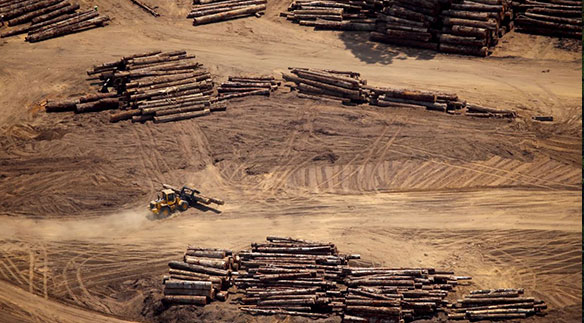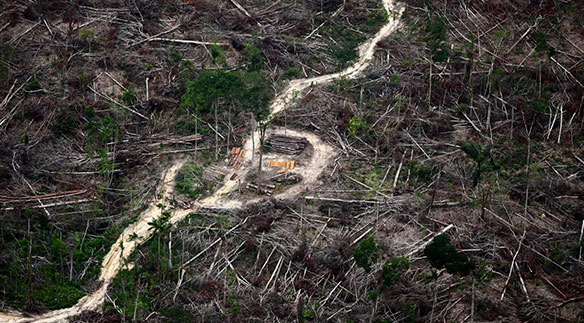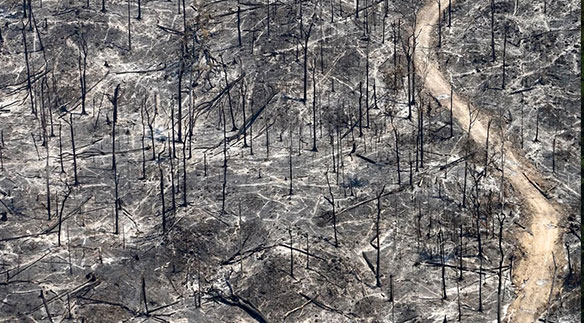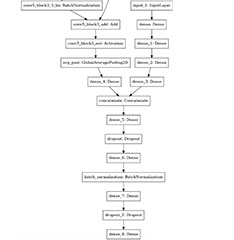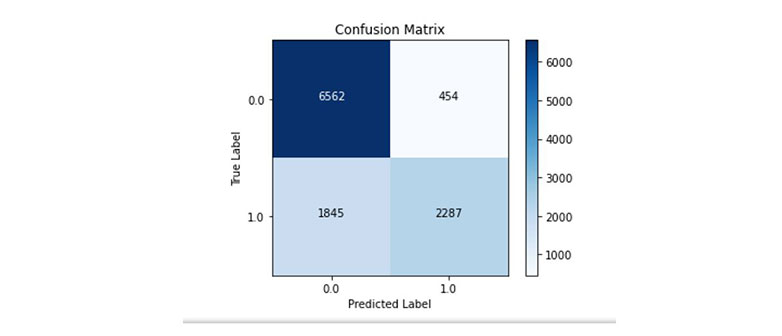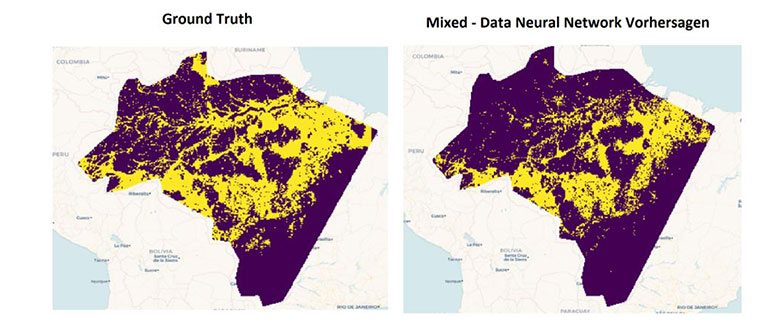di Pier Luigi Pisa
Tra i firmatari il creatore di ChatGpt Altman e Hassabis (Google): “Senza regole la specie umana è a rischio“

“L’Umanità potrebbe estinguersi per colpa dell’intelligenza artificiale”. Questa volta l’allarme è ancora più esplosivo. Perché arriva direttamente da coloro che hanno acceso la miccia. Sam Altman, CEO di OpenAI, è tra i principali firmatari di una lettera inquietante: “Mitigare il rischio di estinzione per mano dell’AI dovrebbe essere una priorità globale, alla pari di altri rischi su scala sociale come le pandemie e la guerra nucleare”.
Fonte: Repubblica
English translate
Among the signatories are the creator of ChatGpt Altman and Hassabis (Google): "Without rules the human species is at risk".
"Humanity could become extinct due to artificial intelligence." This time the alarm is even more explosive. Because it comes directly from those who lit the fuse. Sam Altman, CEO of OpenAI, is among the main signatories of a disturbing letter: "Mitigating the risk of extinction at the hands of AI should be a global priority, on par with other societal-scale risks such as pandemics and nuclear war".
Umanità a rischio di estinzione per colpa dell’AI. Ancora un nuovo (l’ennesimo) allarme
di Luca Tremolada, 30 Maggio 2023
Tra firmatari gli ad di OpenAI e Google Deepmind e anche Geoffrey Hinton, “padrino” dell’AI
Un nuovo allarme, il terzo in pochi mesi, certamente il più catastrofico. Dopo la lettera del fondatore di Tesla, Elon Musk, che chiedeva all’industria dell’intelligenza artificiale di fermarsi per riflettere e l’avvertimento di Sam Atlman, papà di ChatGpt di andarsene dall’Europa – avvertimento subito rientrato il giorno dopo – arriva l’allarme lanciato da alcuni leader del settore.
Nello specifico, 350 manager hanno firmato una lettera del no profit Center for AI Safety per dirci che l’intelligenza artificiale pone una minaccia esistenziale all’umanità e dovrebbe essere considerata un rischio sociale come le pandemie e le guerre nucleari. Leggiamo meglio: “Mitigare il rischio di estinzione” posto dall’intelligenza artificiale “dovrebbe essere una priorità insieme ad altri rischi sociali come le pandemie e le guerre nucleari”.
Le giravolte di Sam Altman
Fra i firmatari della lettera, riporta il New York Times, ci sono l’amministratore delegato di OpenAI, Sam Altman, il numero uno di Google DeepMind, Demis Hassabis, e il leader di Anthropic, Dario Amodei. E anche Geoffrey Hinton, uno dei padrini dell’AI che si era “licenziato” da Google per avere le mani più libere per avvertire il mondo dei rischi dell’AI.
E forse occorrerebbe partire dai firmatari per contestualizzare questi allarmi. Tra tutti Sam Altman, il papà di ChatGpt, ultimamente è il più allarmato.
Il 29 marzo scorso, commentando la lettera firmata da Elon Musk che chiedeva lo stop allo sviluppo dei chatbot, l’ad di OpenAi si era detta d’accordo ma solo con alcune parti. “Mancano le sfumature tecniche”. E poi, aggiunse, “non era il modo giusto per richiedere migliori linee guida sulla sicurezza”. La settimana scorsa davanti al Senato Usa è tornato sull’argomento paragonando l’Ai all’energia e chiedendo una Aiea (Agenzia internazionale dell’energia atomica) per regolare il settore. Durante un tour in Europa, ha poi dichiarato che OpenAi era pronta ad andarsene dal mercato europeo qualora non dovesse trovare una “quadra” con i regolamenti dell’UE.
Il nodo dei Big e la monetizzazione dell’AI
Ricordiamo, sempre per fornire qualche informazione di contesto, che ad aprile il Garante della privacy italiano aveva bloccato l’accesso a ChatGpt per due settimane chiedendogli di rispettare al legge europea sulla privacy e la gestione dei dati. E che a breve, a giugno, dovrebbe andare in porto l’Ai Act, la Direttiva europea che disciplinerà tutte le forme di Ai per tutti gli Stati del vecchio continente.
La minaccia è durata meno di 24 ore, perché poi Altman avrebbe spiegato di essere stato frainteso dopo un ammonimento da parte del Commissario Thierry Breton, che ha accusato l’azienda di ricatto, Altman ha twittato che “non ci sono piani per andarsene”. Poi il silenzio fino alla lettera di oggi. I maligni scrivono che la richiesta giusta di regole in realtà sottenda la volontà dei big tech di impedire che l’intelligenza artificiale diventi open source, più trasparente e aperta a tutti e quindi più difficile da monetizzare. Come sanno bene i Chatbot, le parole sono importanti. E ogni parola va inserita nel contesto più opportuno.
Fonte: Il Sole 24 Ore
English translate
by Luca Tremolada, 30 May 2023
Among the signatories are the CEOs of OpenAI and Google Deepmind and also Geoffrey Hinton, "godfather" of AI
A new alarm, the third in a few months, certainly the most catastrophic. After the letter from the founder of Tesla, Elon Musk, who asked the artificial intelligence industry to stop and reflect and the warning from Sam Atlman, father of ChatGpt, to leave Europe - a warning immediately returned the next day - here comes the alarm raised by some industry leaders.
Specifically, 350 managers signed a letter from the nonprofit Center for AI Safety to tell us that artificial intelligence poses an existential threat to humanity and should be considered a social risk like pandemics and nuclear wars. Let's read better: “Mitigating the risk of extinction” posed by artificial intelligence “should be a priority together with other social risks such as pandemics and nuclear wars”.
Sam Altman's spins
Among the signatories of the letter, reports the New York Times, are the CEO of OpenAI, Sam Altman, the number one of Google DeepMind, Demis Hassabis, and the leader of Anthropic, Dario Amodei. And also Geoffrey Hinton, one of the godfathers of AI who "resigned" from Google to have freer hands to warn the world of the risks of AI.
And perhaps it would be necessary to start from the signatories to contextualize these alarms. Of all of them, Sam Altman, the father of ChatGpt, has been the most alarmed lately.
Last March 29, commenting on the letter signed by Elon Musk asking for a stop to the development of chatbots, the CEO of OpenAi said she agreed but only with some parts. “The technical nuances are missing.” And then, he added, “it wasn't the right way to ask for better safety guidelines.” Last week in front of the US Senate he returned to the topic by comparing AI to energy and calling for an IAEA (International Atomic Energy Agency) to regulate the sector. During a tour in Europe, he then declared that OpenAi was ready to leave the European market if it did not find a "square" with EU regulations.
The big issue and the monetization of AI
We remind you, again to provide some context information, that in April the Italian Privacy Guarantor blocked access to ChatGpt for two weeks asking it to comply with the European law on privacy and data management. And that soon, in June, the AI Act should be implemented, the European Directive that will regulate all forms of AI for all the states of the old continent.
The threat lasted less than 24 hours, as Altman later explained that he had been misunderstood. After a warning from Commissioner Thierry Breton, who accused the company of blackmail, Altman tweeted that "there are no plans to leave." Then silence until today's letter. The malicious people write that the right request for rules actually underlies the desire of big tech to prevent artificial intelligence from becoming open source, more transparent and open to all and therefore more difficult to monetize. As Chatbots know well, words are important. And every word must be placed in the most appropriate context.
Digital Life L’intelligenza artificiale ci mette a rischio di estinzione
L’intelligenza artificiale rappresenta un pericolo per l’umanità paragonabile a quello di pandemie e guerre nucleari: l’allarme di 350 scienziati.

https://www.focus.it/tecnologia/digital-life/intelligenza-artificiale-ci-mette-a-rischio-di-estinzione
“Mitigare i rischi di estinzione causati dall’intelligenza artificiale dovrebbe essere una priorità globale, così come viene fatto per altri rischi su scala sociale come le pandemie e la guerra nucleare”.
Con questo laconico comunicato firmato da 350 scienziati e ingegneri impiegati nel campo dell’IA e pubblicato dalla no-profit Center for AI Safety, i massimi esperti del settore tornano a parlare dei rischi connessi allo sviluppo sempre più avanzato dell’intelligenza artificiale: non più soltanto deep fake e perdita di posti di lavoro, ma addirittura la scomparsa della nostra specie.
NOMI ILLUSTRI. Tra i firmatari della sinistra lettera aperta spiccano i leader delle principali compagnie di IA come Sam Altman, direttore esecutivo di OpenAI, Demis Hassabis, stesso ruolo in Google DeepMind e Dario Amodei, alla guida della startup statunitense di IA Anthropic. Ci sono inoltre Geoffrey Hinton e Yoshua Bengio, vincitori di un Turing Award (l’equivalente del Nobel per gli scienziati informatici) e considerati pionieri dell’intelligenza artificiale per i loro studi fondamentali sulle reti neurali, i modelli per l’elaborazione di informazioni alla base dell’apprendimento nei sistemi di riconoscimento facciale, di guida autonoma e degli assistenti sociali, solo per citare alcuni tipi di IA.
PROGRESSI FUORI CONTROLLO. L’appello, tenuto volutamente stringato per non entrare nello specifico sulle singole minacce e far così aderire il massimo numero di scienziati, si inserisce in un clima di generale preoccupazione per il rapidissimo avanzamento di alcuni tipi di IA, come i modelli linguistici di grandi dimensioni tipo ChatGPT. Si teme che lo sviluppo senza regole dei software usati per questo ed altri chatbot concorrenti possa portare a usare l’intelligenza artificiale per diffondere disinformazione e propaganda, creando disordine nelle istituzioni e disgregazione sociale.
SITUAZIONE PARADOSSALE. Questi timori spesso espressi dagli scienziati solo privatamente portano gli addetti ai lavori nel campo dell’IA a trovarsi nella scomoda posizione di temere le stesse tecnologie che stanno contribuendo a creare: la paura più grande è quella di sviluppare, in un futuro non troppo lontano, un’intelligenza artificiale forte o generale, capace di apprendere e capire esattamente come un essere umano.
TROPPO INTELLIGENTI PER SOPRAVVIVERE. Quella dell’IA si aggiunge alle altre minacce per la sopravvivenza della nostra specie messe in essere dallo stesso operato dell’uomo, come i cambiamenti climatici, le armi nucleari, o il rischio crescente di pandemie dovuto all’uso sconsiderato delle risorse naturali. Sembra insomma che, qualunque sia il destino che ci attende, la fine debba avvenire per autodistruzione – un bell’autogoal per una specie che si dice intelligente.
ALCUNI PALETTI. Fortunatamente abbiamo nelle mani anche gli strumenti per tutelarci, e sarebbe meglio farlo per tempo. In un post pubblicato di recente, proprio Altman con altri due dirigenti di OpenAI suggerisce alcune strategie per gestire le potenzialità dell’IA in modo responsabile: una cooperazione tra soggetti industriali che operano nel campo, maggiori ricerche sui modelli linguistici e la formazione di un’organizzazione internazionale per la sicurezza dell’IA simile all’Agenzia Internazionale per l’Energia Atomica (AIEA), l’organo che vigila sulla gestione, le applicazioni e la sicurezza nucleare.
Altman si è inoltre espresso a favore di leggi che richiedano ai creatori dei modelli di IA più avanzati di registrarsi per ottenere una licenza all’uso regolamentata dai governi.
Fonte: Focus
English translate
Digital Life Artificial intelligence puts us at risk of extinction
Artificial intelligence represents a danger for humanity comparable to that of pandemics and nuclear wars: the alarm of 350 scientists.
“Mitigating extinction risks caused by artificial intelligence should be a global priority, as is done for other societal-scale risks such as pandemics and nuclear war.”
With this laconic statement signed by 350 scientists and engineers employed in the field of AI and published by the non-profit Center for AI Safety, the top experts in the sector return to talking about the risks associated with the increasingly advanced development of artificial intelligence: no longer only deep fakes and job losses, but even the disappearance of our species.
ILLUSTRIOUS NAMES. Among the signatories of the sinister open letter stand out the leaders of the main AI companies such as Sam Altman, executive director of OpenAI, Demis Hassabis, same role in Google DeepMind and Dario Amodei, at the helm of the US AI startup Anthropic. There are also Geoffrey Hinton and Yoshua Bengio, winners of a Turing Award (the equivalent of the Nobel for computer scientists) and considered pioneers of artificial intelligence for their fundamental studies on neural networks, models for processing information at basis of learning in facial recognition, autonomous driving and social worker systems, to name just a few types of AI.
PROGRESS OUT OF CONTROL. The appeal, deliberately kept brief so as not to go into specifics on individual threats and thus get the maximum number of scientists to join, is part of a climate of general concern for the very rapid advancement of some types of AI, such as large linguistic models type ChatGPT. It is feared that the unregulated development of the software used for this and other competing chatbots could lead to the use of artificial intelligence to spread disinformation and propaganda, creating disorder in institutions and social disintegration.
PARADOXICAL SITUATION. These fears often expressed by scientists only privately lead those working in the field of AI to find themselves in the uncomfortable position of fearing the very technologies they are helping to create: the greatest fear is that of developing, in the not too distant future, a strong or general artificial intelligence, capable of learning and understanding exactly like a human.
TOO SMART TO SURVIVE. That of AI adds to the other threats to the survival of our species posed by man's own actions, such as climate change, nuclear weapons, or the growing risk of pandemics due to the reckless use of natural resources. In short, it seems that, whatever fate awaits us, the end must come through self-destruction – a nice own goal for a species that claims to be intelligent.
SOME STAKES. Fortunately we also have the tools in our hands to protect ourselves, and it would be better to do so in time. In a recently published post, Altman himself, together with two other OpenAI executives, suggests some strategies for managing the potential of AI in a responsible way: cooperation between industrial entities operating in the field, more research on linguistic models and the formation of a international organization for AI safety similar to the International Atomic Energy Agency (IAEA), the body that oversees nuclear management, applications and safety.
Altman has also argued in favor of laws that would require creators of the most advanced AI models to register for a government-regulated license to use them.
Dott. Alessio Brancaccio, tecnico ambientale Università degli Studi di L’Aquila, membro partecipante ordinario Fondazione Michele Scarponi Onlus, ideologo e membro del movimento ambientalista Ultima Generazione appartenente alla Rete Internazionale A22 in contrasto al Cambiamento Climatico in atto






